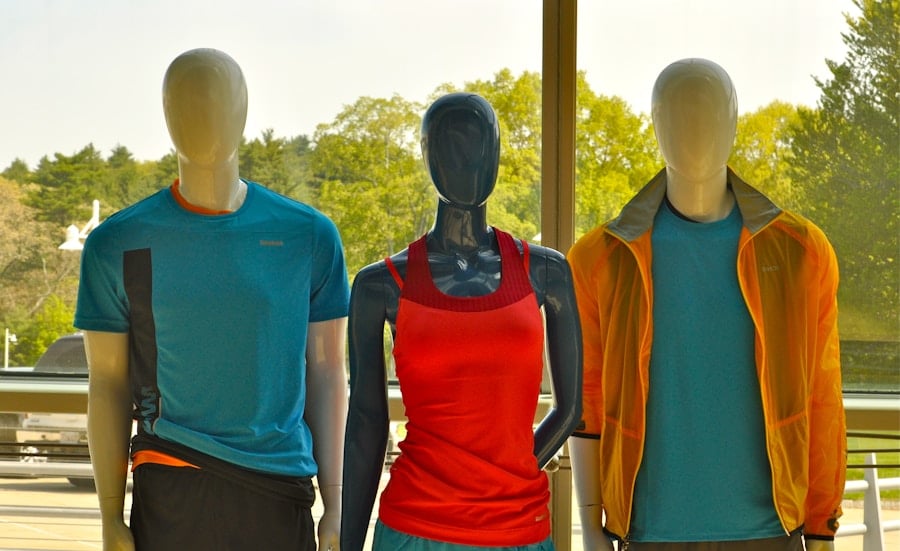The advent of smart clothing represents a significant leap in the intersection of technology and fashion, merging the realms of textiles and electronics to create garments that can monitor and respond to the wearer’s physiological conditions. This innovative approach to apparel has gained traction in various sectors, particularly in sports, fitness, and rehabilitation. Smart clothing is embedded with sensors and devices that collect data on the wearer’s movements, heart rate, temperature, and other vital signs, providing insights that were previously only accessible through more cumbersome equipment.
As the demand for personalized health and fitness solutions continues to rise, smart clothing is poised to revolutionize how individuals approach their physical well-being. The integration of technology into clothing not only enhances performance but also offers a new level of convenience for users. Athletes can now receive real-time feedback on their physical state, allowing them to optimize their training regimens and improve recovery times.
Moreover, smart clothing can be beneficial for individuals undergoing rehabilitation, as it provides healthcare professionals with valuable data to tailor recovery programs. As this technology evolves, it promises to redefine our understanding of body mechanics and health management, making it an exciting area of exploration for both consumers and researchers alike.
Key Takeaways
- Smart clothing is a revolutionary technology that integrates electronics and sensors into garments to track various aspects of the body’s movement and performance.
- Understanding muscle movement and recovery is crucial for athletes and individuals looking to optimize their physical performance and prevent injuries.
- Smart clothing plays a vital role in tracking muscle movement by capturing data on muscle activity, range of motion, and fatigue during physical activities.
- The benefits of using smart clothing for tracking muscle movement and recovery include real-time monitoring, personalized training insights, and injury prevention.
- Smart clothing technology works by embedding sensors and conductive yarns into the fabric to collect and transmit data to a connected device or app for analysis and feedback.
Understanding Muscle Movement and Recovery
Muscle movement is a complex process that involves the coordination of various physiological systems. When we engage in physical activity, our muscles contract and relax in a highly synchronized manner, allowing us to perform tasks ranging from simple walking to intricate athletic maneuvers. This process is governed by the nervous system, which sends signals to muscle fibers to initiate movement.
Understanding how muscles work is crucial for optimizing performance and preventing injuries. Factors such as muscle fatigue, strength imbalances, and improper technique can significantly impact an athlete’s ability to perform effectively. Recovery is equally important in the context of muscle movement.
After intense physical exertion, muscles undergo a repair process that is essential for growth and strength development. Recovery involves several physiological processes, including the replenishment of energy stores, removal of metabolic waste products, and repair of muscle fibers. The duration and quality of recovery can influence an athlete’s subsequent performance; inadequate recovery can lead to overtraining, increased risk of injury, and diminished athletic performance.
Therefore, understanding the dynamics of muscle movement and recovery is vital for athletes and fitness enthusiasts who aim to maximize their potential while minimizing the risk of injury.
The Role of Smart Clothing in Tracking Muscle Movement

Smart clothing plays a pivotal role in tracking muscle movement by utilizing advanced sensor technology embedded within the fabric. These sensors can detect various parameters such as muscle activation, joint angles, and movement patterns. By capturing this data in real-time, smart clothing provides athletes with immediate feedback on their performance, allowing them to make necessary adjustments during training sessions.
For instance, a runner might receive alerts about their stride length or cadence, enabling them to optimize their running technique for better efficiency. Moreover, smart clothing can track muscle movement over extended periods, providing valuable insights into an athlete’s training history and progress. This longitudinal data can help identify trends in performance and recovery, allowing athletes to make informed decisions about their training regimens.
Coaches and trainers can also leverage this information to tailor training programs that address specific weaknesses or imbalances in muscle function. By integrating smart clothing into their training routines, athletes can gain a deeper understanding of their bodies and enhance their overall performance.
The Benefits of Using Smart Clothing for Tracking Muscle Movement and Recovery
The benefits of using smart clothing for tracking muscle movement and recovery are manifold. One of the most significant advantages is the ability to monitor performance metrics in real-time. This immediate feedback allows athletes to make on-the-fly adjustments to their techniques or strategies, which can lead to improved outcomes during training sessions or competitions.
For example, a cyclist wearing smart clothing might receive data on their power output and heart rate, enabling them to adjust their effort levels accordingly. In addition to real-time monitoring, smart clothing also facilitates more effective recovery strategies. By tracking muscle fatigue levels and recovery metrics such as heart rate variability, athletes can better understand when they need rest or when they are ready to resume training.
This data-driven approach helps prevent overtraining and reduces the risk of injuries associated with inadequate recovery. Furthermore, smart clothing can provide insights into muscle imbalances or weaknesses that may not be apparent through traditional training methods, allowing athletes to address these issues proactively.
How Smart Clothing Technology Works
The technology behind smart clothing is a sophisticated blend of textiles and electronics designed to capture and transmit data seamlessly. At its core, smart clothing incorporates sensors that measure various physiological parameters such as electromyography (EMG) signals, which indicate muscle activation levels. These sensors are often made from conductive materials that can be woven into the fabric without compromising comfort or flexibility.
Once the sensors collect data, it is transmitted wirelessly to a connected device such as a smartphone or tablet via Bluetooth or Wi-Fi. This data can then be analyzed using specialized software applications that provide users with insights into their performance metrics. Some smart clothing systems even incorporate machine learning algorithms that can adapt recommendations based on individual performance trends over time.
This level of personalization enhances the effectiveness of training programs and recovery strategies.
Examples of Smart Clothing for Tracking Muscle Movement

Several innovative products exemplify the capabilities of smart clothing in tracking muscle movement. One notable example is the Athos Smart Apparel system, which features shirts and shorts embedded with EMG sensors that monitor muscle activity during workouts. Users can view real-time data on muscle engagement through a companion app, allowing them to adjust their exercises for optimal performance.
Another example is the Hexoskin Smart Shirt, which tracks not only muscle movement but also vital signs such as heart rate, breathing rate, and activity levels. This comprehensive monitoring system provides users with a holistic view of their physical state during exercise and recovery periods. Athletes can use this information to fine-tune their training regimens based on their physiological responses.
Additionally, companies like Lumo Bodytech have developed smart shorts that provide feedback on posture and movement patterns during activities like running or cycling. By analyzing data related to body alignment and movement efficiency, these garments help users improve their technique while reducing the risk of injury.
Challenges and Limitations of Smart Clothing for Muscle Movement Tracking
Despite the promising potential of smart clothing technology, several challenges and limitations must be addressed for widespread adoption. One significant hurdle is the accuracy and reliability of the data collected by sensors embedded in garments. Variability in sensor placement or external factors such as temperature can affect readings, leading to inconsistencies in performance metrics.
Another challenge lies in user acceptance and comfort. While many individuals are open to incorporating technology into their fitness routines, some may find wearing smart clothing cumbersome or uncomfortable during physical activities.
The balance between functionality and comfort is essential; if users do not feel at ease in these garments, they are less likely to utilize them effectively. Moreover, privacy concerns regarding data collection pose another limitation. As smart clothing collects sensitive information about an individual’s health and performance metrics, ensuring that this data is securely stored and used ethically is paramount.
Users must have confidence that their personal information will not be misused or shared without consent.
Future Developments in Smart Clothing for Muscle Movement and Recovery Tracking
The future of smart clothing technology holds immense potential for further advancements in tracking muscle movement and recovery processes. As sensor technology continues to evolve, we can expect more accurate and sophisticated monitoring capabilities integrated into everyday apparel. Innovations such as flexible electronics may allow for even more seamless integration of sensors into fabrics without compromising comfort or style.
Additionally, advancements in artificial intelligence could enhance the analytical capabilities of smart clothing systems.
This level of customization would empower athletes to optimize their training regimens more effectively than ever before.
Furthermore, as awareness around health and wellness continues to grow, we may see an increase in collaborations between tech companies and fashion brands aimed at creating stylish yet functional smart clothing options. This could lead to a broader acceptance of smart apparel among consumers who prioritize both aesthetics and performance. In conclusion, the evolution of smart clothing technology presents exciting opportunities for enhancing our understanding of muscle movement and recovery processes.
As innovations continue to emerge in this field, we are likely to witness transformative changes in how individuals approach fitness training and rehabilitation strategies.
Smart clothing is not the only technology making waves in the health and fitness industry. Smartwatches are also playing a significant role in revolutionizing how we track our health and wellness. In fact, a recent article on the best smartwatch apps of 2023 highlights how these wearable devices are becoming increasingly sophisticated in monitoring various aspects of our well-being. Whether it’s tracking our steps, monitoring our heart rate, or even reminding us to take breaks throughout the workday, smartwatches are proving to be invaluable tools in helping us stay on top of our health goals.
FAQs
What is smart clothing?
Smart clothing refers to garments that are embedded with technology such as sensors, microchips, and other electronic components to collect and transmit data about the wearer’s body movements, biometrics, and other physiological information.
How does smart clothing track muscle movement?
Smart clothing uses embedded sensors to detect and measure muscle movement by monitoring changes in electrical signals produced by muscle contractions. These sensors can track the intensity, duration, and frequency of muscle activity during physical activities.
How does smart clothing help in muscle recovery?
Smart clothing can provide real-time feedback on muscle activity and performance, allowing users to adjust their training or rehabilitation programs accordingly. By monitoring muscle movement and recovery, smart clothing can help prevent overtraining and reduce the risk of injury.
What are the benefits of using smart clothing for tracking muscle movement and recovery?
Some benefits of using smart clothing for tracking muscle movement and recovery include personalized training insights, improved performance optimization, injury prevention, and enhanced rehabilitation monitoring. Smart clothing can also provide valuable data for athletes, physical therapists, and researchers.
Are there any limitations to smart clothing for tracking muscle movement and recovery?
Some limitations of smart clothing for tracking muscle movement and recovery include potential discomfort from wearing the technology, limited durability of the electronic components, and the need for regular maintenance and calibration of the sensors. Additionally, the accuracy of the data collected may vary depending on the quality of the smart clothing technology.

